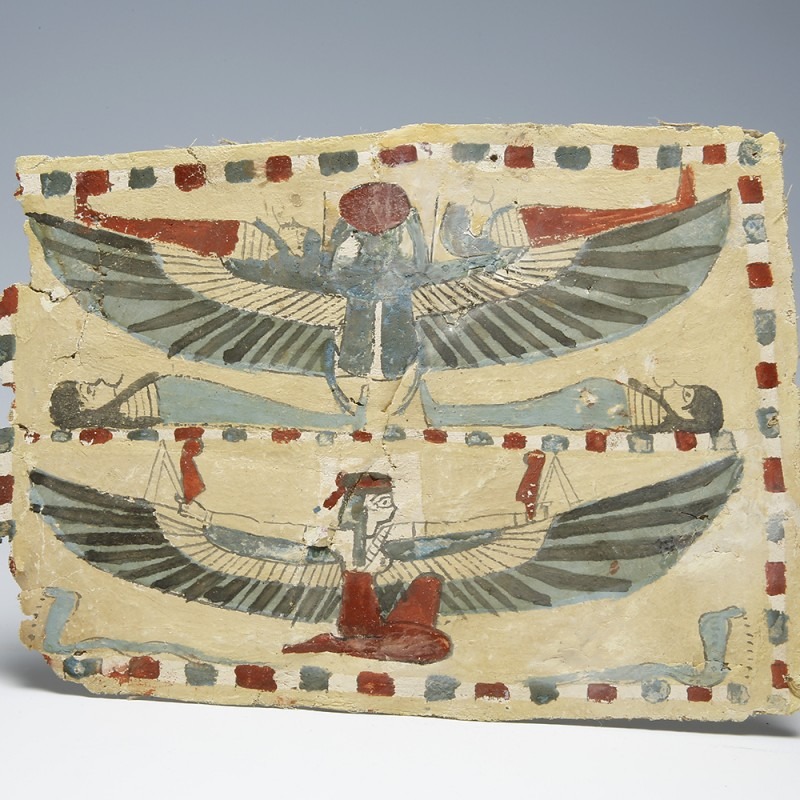Cartonnage was a material used to shroud mummies, as well as to make masks and panels on which to paint. It involved layering fibres or papyrus to create an even and smooth surface, and cutting particular layers to produce the desired shape. Plaster was then added on top, and, when it had dried, the cartonnage was brightly painted with elaborate patterns. These usually consisted of geometric shapes, deities, and inscriptions. Cartonnage enjoyed widespread use from the First Intermediate Period all the way into the Roman era.
The winged scarab was a representation of the god, Khepri, who was in turn one of the manifestations of the sun-god, Ra. It frequently appeared as a symbol on cartonnage, and was believed to possess protective qualities. Ra (and so Khepri also) was a solar deity: accordingly, the rolling of the scarab beetle’s dung across the ground was thought to echo the journey of the sun across the sky. Khepri, as a manifestation of Ra, was regarded as the morning sun – the sun that first rises. This ideology would have been very powerful for the Egyptians, who placed great value on the journey to, and rebirth in, the afterlife.
